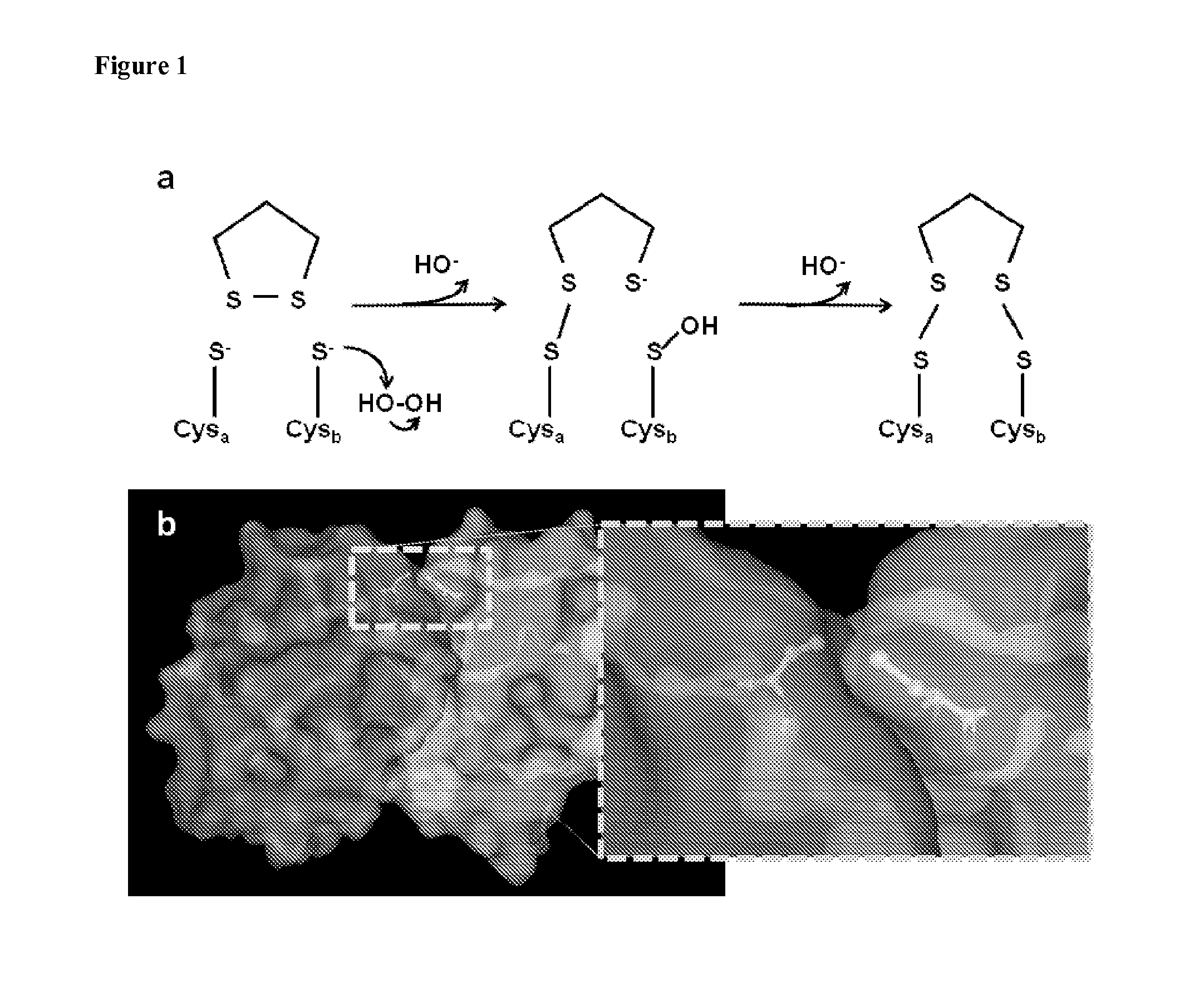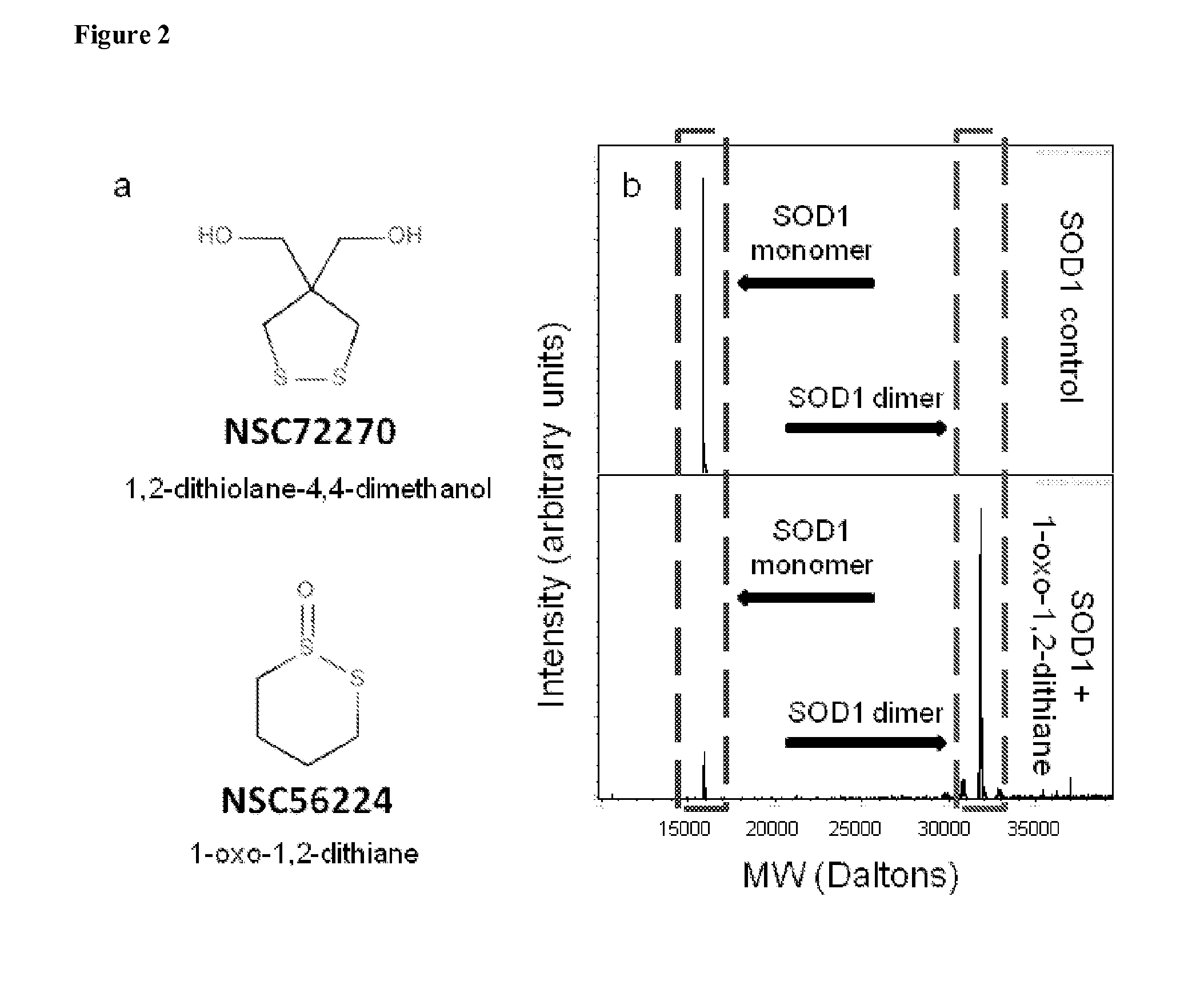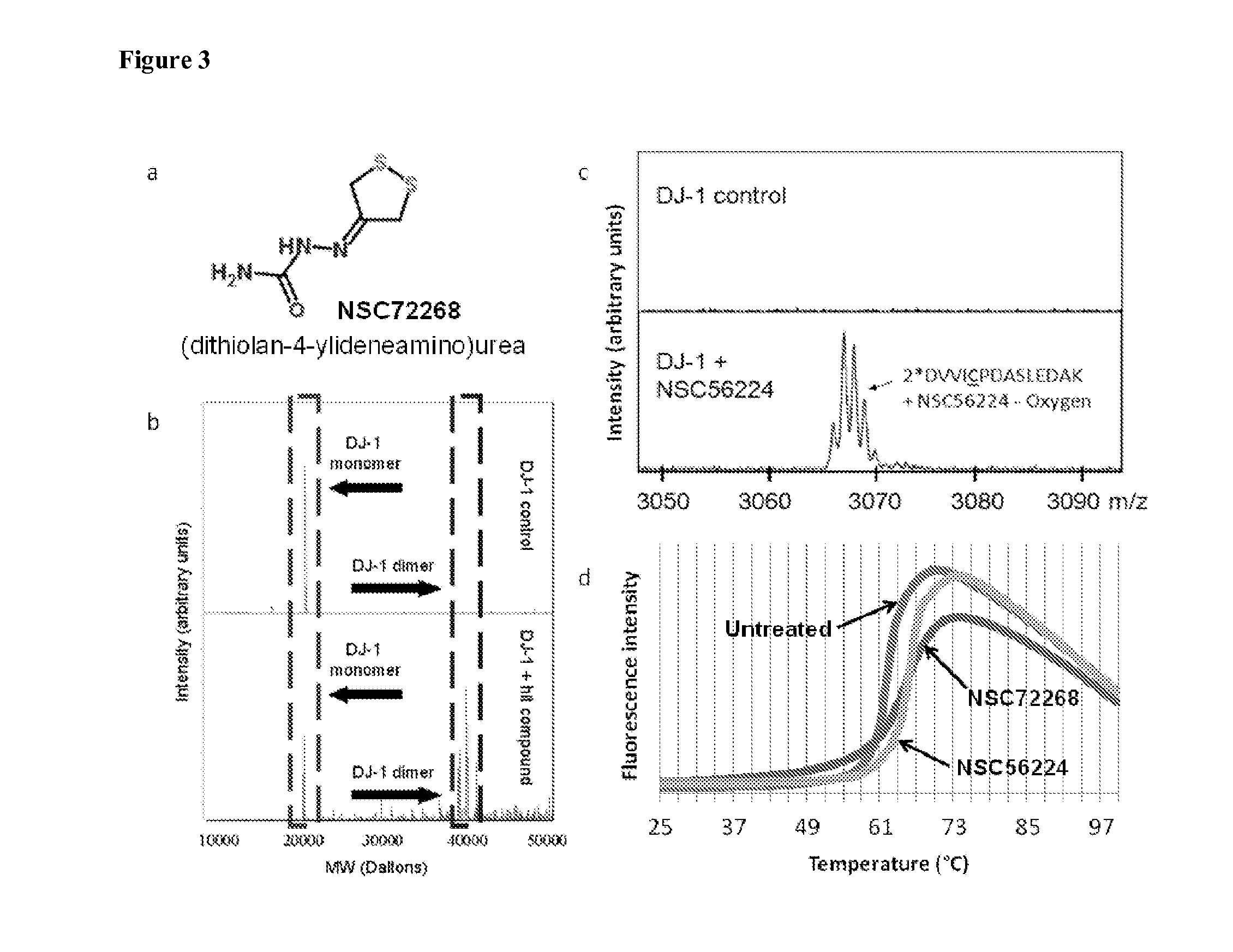Tethering Cysteine Residues Using Cyclic Disulfides
a technology of cyclic disulfide and cysteine residues, which is applied in the field of tethering cysteine residues using cyclic disulfides, can solve the problems of severe “hangover” symptoms and the specificity of therapeutics employing reactive sulfhydryl groups that is poorly understood
- Summary
- Abstract
- Description
- Claims
- Application Information
AI Technical Summary
Benefits of technology
Problems solved by technology
Method used
Image
Examples
example 1
General Materials and Methods
Cross-Linking and Western Blots
[0206]WtSOD1 or wtDJ-1 was incubated with 5-25 mM DTT for approximately 20 minutes and either buffer exchanged using Amicon Ultra-4 centrifugal spin concentrators (MWCo 10K) or using reversed phase chromatography (ZIPTIP, Millipore, Inc). Samples cleaned by ZIPTIPs were also subjected to incubation with 5 mM EDTA. SOD1 samples that were buffer exchanged using Amicon concentrators were exchanged into in HPLC water, whereas ZIPTIP samples were further exchanged after ZIPTIP into PBS, pH 7.4 or HPLC water. DTT-reduced SOD1 or DJ-1 was incubated at a 1:1 (20 μM:20 μM or 10 μM:10 μM) or 1:3 (20 μM:60 μM or 10 μM:30 μM) ratio of protein to cross-linker
[0207]A variety of cross-linkers were used. Cross-linking was achieved by incubating the reaction in either PBS pH 7.4 or water at room temperature for 1 hour. After an hour the reactions were analyzed on a 15% SDS-PAGE gel with a non-cross-linked control, transferred to nitrocellul...
example 2
LC-MS Screen of Cyclic Disulfides with SOD1 Reveals Small Molecules that Covalently Link SOD1 Dimers
[0210]Compounds being evaluated were dissolved and incubated with recombinant human WT SOD1. Reactions were analyzed by LC-ESI-IonTrap-MS on a HCT Ultra ion trap (Bruker Daltonics, Billerica, Mass., USA). The resulting data was examined using DataAnalysis 3.4 (Bruker Daltonics Inc., Billerica, Mass., USA). Mass spectra were averaged across the retention times corresponding to when SOD1 was found to be eluting and Maximum Entropy Deconvolution was applied to the resulting average mass spectrum in order to determine the molecular weight of the uncharged species detected. Significant dithiol- and cyclic disulfide-mediated covalent dimer formation has been observed with multiple different compounds. For example, the changes in mass of the covalently linked SOD1 dimers observed suggest both 1,2-dithiolane-4,4-dimethanol and 1-oxo-1,2-dithiane (FIG. 2a) are capable of covalently dimerizing ...
example 3
LC-MS Screen of Cyclic Disulfides with DJ-1 Reveals Molecules that Covalently Link DJ-1 Dimers
[0211]Using the same method as described for SOD1, compounds were screened against WT DJ-1. In addition to NSC56224 again being identified as a covalent dimerizer of DJ-1, NSC72268 was identified as a specific DJ-1 covalent dimerizer (FIG. 3a,b). Digesting NSC56224-linked DJ-1 with trypsin following by MALDI-TOF-MS confirmed NSC56224 covalently linked DJ-1 dimers at Cys53 (FIG. 3c). Both NSC56224 and NSC72268 were found to increase the denaturation temperature of DJ-1 measured with differential scanning fluorimetry (FIG. 3d) (Niesen et al., 2007), suggesting covalent dimerization increased DJ-1 thermal stability. NSC72268 and NSC56224 are shown in FIG. 6.
PUM
| Property | Measurement | Unit |
|---|---|---|
| temperature | aaaaa | aaaaa |
| pH | aaaaa | aaaaa |
| tertiary structure | aaaaa | aaaaa |
Abstract
Description
Claims
Application Information
 Login to View More
Login to View More - R&D
- Intellectual Property
- Life Sciences
- Materials
- Tech Scout
- Unparalleled Data Quality
- Higher Quality Content
- 60% Fewer Hallucinations
Browse by: Latest US Patents, China's latest patents, Technical Efficacy Thesaurus, Application Domain, Technology Topic, Popular Technical Reports.
© 2025 PatSnap. All rights reserved.Legal|Privacy policy|Modern Slavery Act Transparency Statement|Sitemap|About US| Contact US: help@patsnap.com



